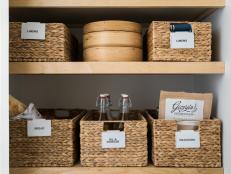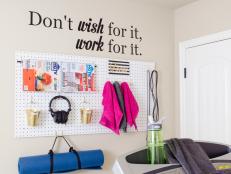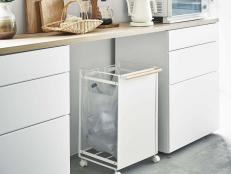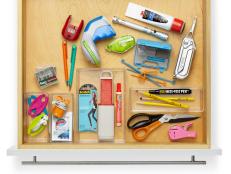Organization Basics
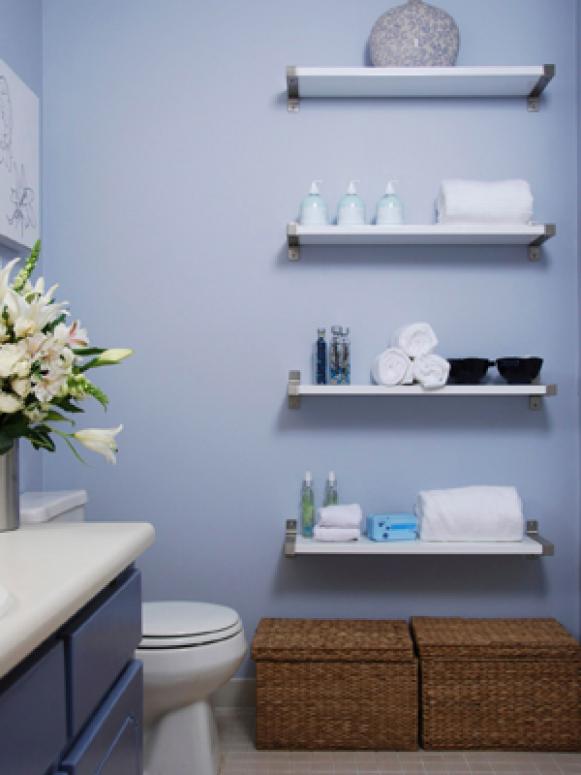
Are you overwhelmed thinking about how to get your entire house in order? First, put away the notion that it will happen overnight, or even in a week. And keep in mind the goal isn't to end up with a sparkling space where everything is always in its place. The key to a more organized home isn't just about tossing most of your stuff and stashing the rest in cute containers (although they do help when the time is right) - it's more about recognizing and replacing bad practices with better habits that'll help you dig out from the mess on a daily basis.
The best part about the organizing process is that no matter what room you're wanting to straighten up, the rules are essentially the same - here's a four-step guide to get started, which also includes 13 strategies to prevent you from procrastinating along the way.
1. Define Your Space
For each room you want to organize, organizing expert Charlotte Steill says to take a notebook and sit down in each space, making notes on the following questions:
- How will the room be used by your family? A shared family space for games, toys and movies? An office for one or all? Be sure to account for all of the various activities because it will dictate what stays and what will get the boot when it comes time to sort the room's contents.
- What storage is available in the room? Built-in shelves, drawers, cabinets, a closet, baskets and bins? An ottoman with storage? A coffee table with drawers?
- What needs to be stored in the room to support its use? Toys, video games? Books, magazines? Computer equipment?
- What is your goal for the room?
- Does the furniture suit the room, or should it be rearranged or cleared out?
2. Sort Your Stuff
Once you have a plan, tackle only one room at a time and if you're still overwhelmed, narrow it down to one corner at a time. Then, says organizing expert Liz Witts, begin the organizing process by sorting the items into the following categories:
Keep: Items used on a regular basis.
Donate/Sell: Items that are no longer used or are duplicates - things that you can do without and would rather give it to someone else for them to benefit from.
Store: These are sentimental things that you want to hold on to but don't need to have cluttering up your daily living space.
Trash/Recyle: Things that are no longer usable. Worried about how to decide what gets tossed? Follow Liz's suggestion, "If you need to spend more than 15 seconds thinking about what something is, or when you last used it, or why you even have it, then you probably don't need it."
One caveat before you rid yourself of excess: Consider a secondary use for things you're thinking of pitching. Plastic ware can be turned into storage in drawers and cabinets and even old towels can be used for cushioning in a dog bed.
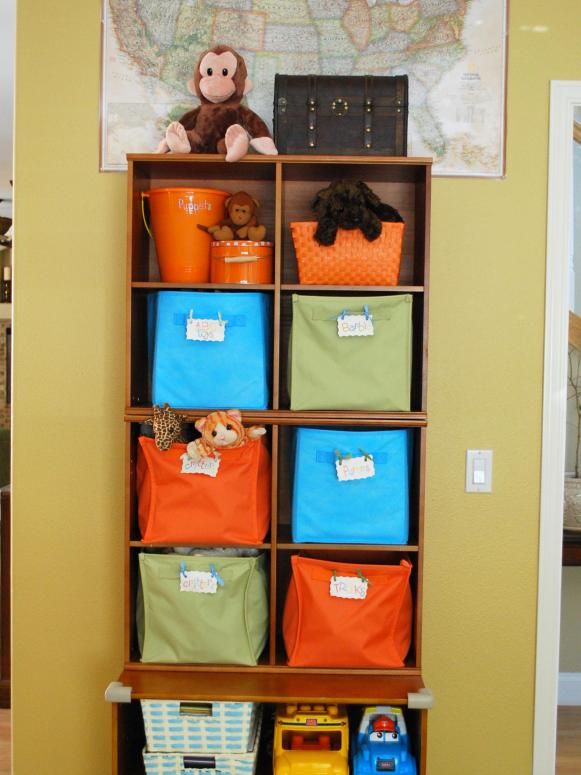
3. Set Up Storage Systems
Now that you're left with only the items you intend to keep, it's essential to set up "homes" or "zones" to maintain organization. "If you are forever misplacing your car keys, create a home for them," says organizing expert Pam Socolow. "Hang hooks near the door, or put an attractive box in a convenient place - whatever works for you. Try to establish a routine of always placing the keys in the designated spot."
Use well-labeled containers to create a storage system, and let your family know where things are located. If space is at a premium, add shelves inside closets to make use of the vertical wall space, says Liz Witts. If you have small children, attach hooks at lower heights so they can hang up their jackets and bags. Adjustable shelving, such as a closet system, is ideal because it can be moved to accommodate various storage needs. Use plastic shoeboxes - or again, even extra plastic ware normally used for food storage - to create kits for things such as sewing items, shoe repair and extension cords.
4. Stay Focused
Procrastination can have a snowball effect - the little things you put off each day can pile up to the point where you're at a loss as to how you'll ever whittle down your perpetually growing to-do list. To help you avoid the inevitable moment when your organizing efforts begin to slide, take note of these 13 strategies from organizing expert Monica Ricci:
Mental Strategies
- Vividly imagine the way you'll feel inside after the task or project is complete.
- Focus on your desired result, not your fear or inaction.
- Imagine yourself completing the task or project easily, quickly and with no setbacks.
- Tune into your procrastination language in your head and derail it with positive thoughts of "I want to," "I can," and "I enjoy" instead.
- Let go of perfectionism. Many things aren't worth doing perfectly, so just start and do your best.
Physical Strategies
- Get an accountability buddy to keep you on task along the way.
- Work out the steps to the project on paper in advance to clarify your thoughts and eliminate all the emotional whirlwind around why you don't want to begin the task or project.
- Master the art of starting. Over and over again.
- Do the hard parts first. Or...
- Do the easy parts first. Whichever motivates you more is the one you should choose.
- Keep a progress log so you don't lose sight of how much you've accomplished.
- Break your project into small, manageable chunks and create interim deadlines for yourself along the way.
- Build in rewards for yourself as you finish each step or as you complete the project.






